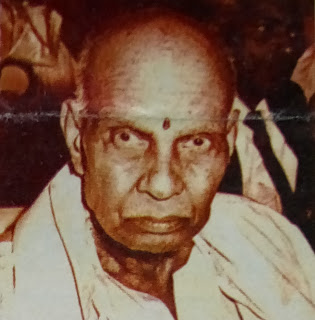|
K
|
oti Chennaya Theme Park, in Karkala, a folk
museum dedicated to the legendary heroes of the bygone age Koti and Chennaya is
drawing curious visitors from far and wide. The ambience, with well laid out
landscape, traditional architecture and a museum, transports one back to five
centuries.
Twin
brothers Koti and Chennaya are believed to have lived in the later part of the
16th century. The legendary twin heroes were
born to Deyi Baidethi of Billava community in Tulunadu. They lost their mother soon after their
birth. Hence they spent their early years under the care of Perumala Ballala, a
local ruler, as a token of gratitude towards their mother for treating his
grievous injury. The brothers grew up to be valiant handsome heroes. But the
coterie around the king considered them a threat and succeeded in eliminating
them. This antipathy continued wherever
they sought shelter, though the rulers loved them.
The common people held them in high esteem
for their bravery and fight against social injustice. The oppressed found a
savior in them. The brothers met a tragic end due to a treacherous act in a
combat near Yenmur in Sullia taluk. Though
their history is made known through the pad-danas, remnants of their
existence are still found authenticating the oral tradition of pad-dana.
Post
their tragic end at a heroic battle they were elevated to divinity. To this day Koti and Chennaya are being worshipped
in shrines called garodis that dot
the Tuluva landscape.
In
Karkala, away from the land where they had born and spent their days (Puttur
and Sullia), an attempt has been made to document the heroic life of Koti-Chennaya
in a historic perspective. The Park came up in 2012 with a grant of Rs 1.78
crore from the State government.
Once
the visitors step inside the compound passing through a traditional entrance, a
vast garden unfolds before them. The tall
compound walls too draw attention. Murals on the inside of the walls on either
side of the entrance portray the Tuluva culture and the lifestyle in olden
days.
The
gigantic Anebagilu (elephantine main entrance) opens into a chavadi (drawing room of old traditional
houses). At the chavadi the “guests” are left to be awed by the tall colourful
wooden statues designed on the lines of urus
of Mekekattu, a place in Udupi district. The chavadi has a conference room on both sides.
Imposing
statues of Koti-Chennaya greet the visitor from a distance at the open air. The
10-foot statues are erected on a pedestal of two feet. Every nuance of the twin heroes’
disposition was taken into account while carving the statues. Though the statues appear identical, the
difference is remarkable.
A
museum resembling a garodi in construction style tells the tale of Koti-
Chennaya. Paintings in Surpur style, a centuries old art, portraying significant
events in the life of Koti and Chennaya are aesthetically placed on the walls.
The 36 paintings of 6x4 sq.ft. size signify 36 years of their existence. Explanatory notes are given below each painting. Surendra, an ever-enthusiastic curator, narrates
the events in the typical paddhana (folklore
rendition) style. His passion lends further charm to the ambience.
Many
articles which were in use those days and antiquated in later years find a
place in the museum. Wooden water lifter, wooden water container, wooden boxes,
ploughs, noodle maker, different kinds of swords, cradles, metal artefacts, chennemane and many more metal and
wooden items including those used in bhoota
worship are on display. Those items indeed provide a glimpse of the life then.
Some of the rare photos of the places Koti-Chennaya are said to have frequented
too are kept in the museum.
Cleanliness
is godliness. Though the Theme Park is
just a historical documentation, its cleanliness and maintenance, lend a divine
charm to it. But it is underutilized
nonetheless. The vast outdoor expanse can provide a serene platform for the
cultural programmes.
The
Theme Park is open from 9.30 am to 5.30 pm on all days including national holidays.
The Department of Kannada and Culture manages the Theme Park spread across about
six acres of land. The construction and ambience of Koti Chennaya Theme Park,
located away from the hustle-bustle of the town, do not belie the time of the
legendary twins.






























